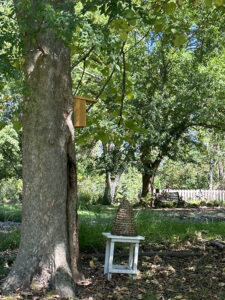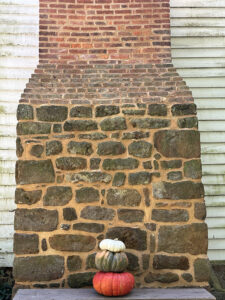This post originally appeared on Murder Is Everywhere.
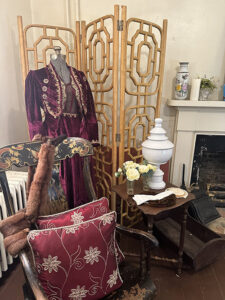
Near my childhood home in St. Paul, Minnesota, you’ll find the Gibbs Farm, a historic farm homestead dating from the 1850s which includes a one room schoolhouse, barn, and household—all of it filled with a miscellany of pioneer life. Old books, clothing, toys, farm equipment, and household furnishings enchanted me. During the summer I was nine, I “volunteered” at Gibbs Farm, walking over daily and doing small tasks the docent staff kindly gave me. I wished I’d been born a hundred years earlier, and by spending days at Gibbs Farm, I pretended that this was true.
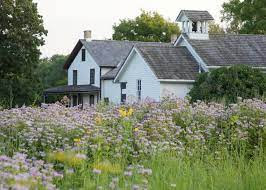
Gibbs Farm nostalgia returned last weekend when I visited a late 1700s farmhouse called Linthicum Walks. The clapboard house is sited in the Anne Arundel, Maryland town of Crofton, where a Welsh immigrant family, the Linthicums, farmed for more than 200 years on a large parcel of land originally purchased in the 1700s. Today, a small graveyard exists, as well as a barn and the original 1700s farmhouse which was built on through the 1920s.
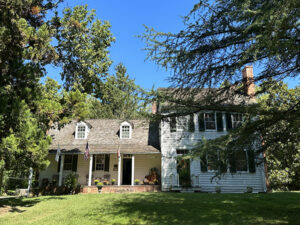
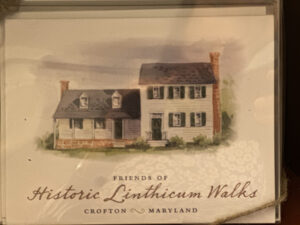
Development surged in Anne Arundel County in the 20th century. Now the small gravel driveway into the Linthicum Walks acreage intersects busy Maryland State Highway 424. Linthicum Walks is flanked by public middle and high schools on either side. Still, because of the tall trees, it remains a private sanctuary.
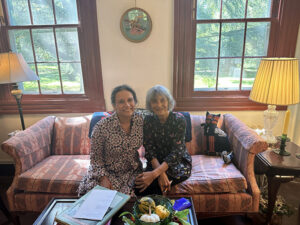
Today Linthicum Walks is managed by a board of trustees endeavoring to bring the local community to enliven the house. The board first invited Marcia Talley, an Anne Arundel County writer, to speak about mystery writing. Marcia generously invited me. So in short order, the two old friends got to chatting with a group of women from Maryland and Virginia in the home’s cozy colonial parlor. Sitting comfortably in a pair of wing chairs, Marcia and I had a signing that really doesn’t compare to any other event we had. It felt like going back in time to a social hour in an enchanting atmosphere. Sunlight streamed through small old-fashioned windows; patinated wooden cabinets were filled with vintage fine china; and original fireplaces were surrounded by fox hunting prints and paintings.
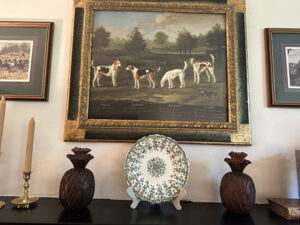
Marcia and I talked about mystery; how we both treasure writing books that are low on violence and high on character and setting. The readers wanted to know about the kind of research we did. Marcia has spent many hours in Maryland graveyards and doing genealogical research that has enriched her Hannah Ives mystery series. I lose myself in libraries such as the Ames at the University of Minnesota that have rare historical source materials. It was heartwarming to be among a group of readers who treasured history while being open to new stories. A board member of Linthicum Walks told us about a library in Maryland we needed to visit that had a strong collection of historical records.
After the book talk, I tiptoed up a narrow staircase and explored three more rooms. One was a sleeping porch, now closed in, from the twentieth century and still furnished like an old-fashioned bedroom. The second room was a nursery bursting with toys and oddities. The other original bedroom contained a melange of antiques, among them a gilded purple velvet gown that somebody’s great aunt is said to have worn to a Presidential inauguration.
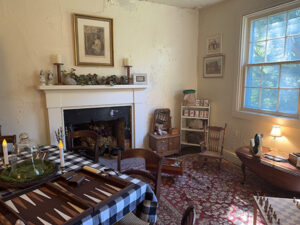
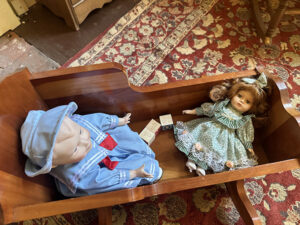
That’s the thing about historic house museums. The stories behind treasures are often orally transmitted legends. Rooms rarely hold furniture that completely belonged to the family, or shows the same time period. There are no little signs that tell you the age and provenance of items, but there’s a lot of amusement to be had when poring over vintage boots, empty tins of Hershey’s cocoa, and samplers embroidered by children. However, there is information galore about the families who lived for generations in one place.
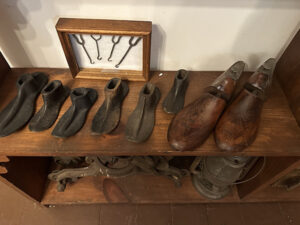
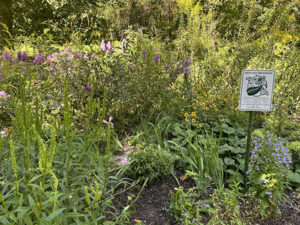
Volunteer gardeners planted several lovely beds of flowers and shrubs outside that attract local pollinators. I spotted a proud-looking beehive, and a cozy squirrel house. And as I regretfully left Linthicum Walks, the air stirring through the trees whispered: “come on back.”
